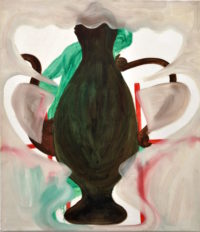
Jan 25 – Feb 22, 2020
Opening hours: 12.00-19.00
Closed on Sun, Mon, and National Holiday
We are pleased to announce the solo show of Shigeru HASEGAWA (b.1963) “2003-2004” from 25 Jan which mainly introduces his unshown works produced especially between 2003-2004.
During 2003-2004, Hasegawa was based in the Netherlands where he used to live during 90s. In the Hasegawa’s works made during this period, we can find some of the essences of the Dutch paintings, as well as the paintings of interior scenes.
Hasegawa didn’t show any of his works for over 6 years from 2013 to 2019 until we had his solo in March, last year and he merely showed his works in 00s. Even though his paintings are in collection of some of the major museums in Japan, but we don’t see variation of them for that reason.
We sincerely hope this would be an opportunity to find out more about Hasegawa, and you will visit us while the exhibition is on view.
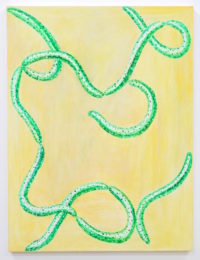
23 Oct – 16 Nov, 2019
Opening hours: 12.00-19.00
Closed on Sun, Mon, and National Holiday
Closed on Sat, 2nd Nov.
We are pleased to announce the 2 artists show of Shigeru HASEGAWA (b.1963) and Yosninori NIWA (b.1982) who newly joined to our gallery this year.
The show introduces their works never shown in Japan.
It would be very much appreciated if you could come and visit us at this occasion.
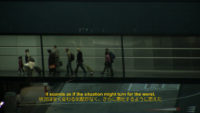
24 July – 9 Aug, 2019
25 Aug – 6 Sep, 2019
Opening reception: 17.00-19.00 on 24 July
Opening hours: Mon.- Fri. 12.00-19.00
Sat.&Sun. 12.00-17.00
We are pleased to announce the solo show of Yosninori NIWA (b.1982) “The Communities We Must Have Imagined” from July 24.
It is said that people are motivated by their emotions and by money, but the specific mechanisms involved are greatly influenced by values imprinted on each individual during the process of growth. Until just recently, it was widely accepted that video was a tool for capturing reality and conveying the truth, but advances in technology have swiftly undermined this assumption. However, people retain an undeniable desire to believe that the moving image is, in fact, reality. Nowadays, there is scarcely a news or media outlet free from sources and information that have been altered, fabricated, and disseminated in line with the broadcaster’s interests, but a world where we must doubt the veracity of everything we see, hear, and read only exhausts its inhabitants. It has come to seem that the problems caused by this “fake news” are not limited to societal chaos and political manipulation by those in power, but may even lead to collapse of “reason,” on which the survival of human civilization depends.
When photographic technology was imported from Europe to Japan, as the country opened to the world at the end of the Edo Period (1603-1868), people reacted in various ways. Those astounded by this unfamiliar technology believed all sorts of things, and there were widespread unfounded rumors that the photographic subject’s soul would be sucked out, or his or her hands would grow larger. The latter is evidently the reason that in many extant photographs from this era, people have their hands drawn inside their sleeves. Today this just seems like a joke, but it also shows how people seek to protect the rationality of the world they know by devising explanations of unfamiliar technologies, and how encounters with these new technologies create opportunities for thought. However, in contemporary society, people are so accustomed to new technologies appearing one after another that they have lost this ability to use their wits. This exhibition reconsiders fake news, a contemporary problem intrinsic to the moving image, from a critical standpoint, and explores its psychological effects.
Many of Niwa Yoshinori’s works take the form of social interventions spanning diverse media, including performance, film, installations, and projects that progress during the exhibition. The clearly stated titles of works are slogan-like and self-explanatory, and in most cases, the entire process of carrying out unproductive and meaningless actions in public spaces is documented on film. By exposing various disturbances generated in the course of putting the work’s title into practice, the artist has revealed the boundaries and limitations of the “public” concept in numerous projects in Japan and abroad. In 2016 Niwa moved his base of operations to the Austrian capital of Vienna, and has been focusing on the social functions of visual media. The current exhibition deals with the Tokyo Olympics approaching in 2020, and comprises a group of works centered on a fake documentary Niwa is producing from 2017 until just before the Olympics. The premise is that “The Communities We Must Have Imagined”
The work turns its attention to the Games’ enthusiastic welcome from the business community, based on the dramatic postwar economic growth that accompanied, or coincided with, the 1964 Tokyo Olympics. However, after a series of historic national crises, the radioactive contamination from the Fukushima nuclear meltdown, and immigration-related issues accompanying internationalization, it is clear that Japan’s situation has changed since then. In this project, Niwa edits together film addressing the Olympics from various perspectives, including interviews with athletes and team managers in the context of the 2020 Tokyo Olympics, archival footage of the 1964 Games, and political speeches by Prime Minister Abe, to create a fictional future documentary with a premise that nobody believes possible: a boycott of all events by Japanese athletes. By creating discrepancies between the video’s overall narrative content and statements made by those appearing in it, the work provokes thought on what ideologies are linked to the future we expect or hope for, what generates this future, and whether it truly reflects the future we anticipated, while re-examining the modern history of postwar Japan thus far.
Yoshinori NIWA artist page
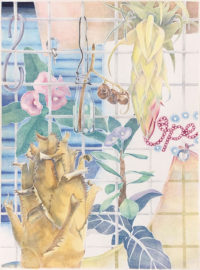
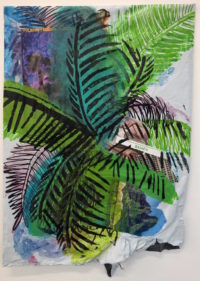
18 May – 22 June, 2019
Opening hours: 12.00-19.00
Closed on Sun., Mon., and public holidays
We are pleased to accnouce the show of “paper works: IKEZAKI Takuya, Makiko MASUTANI” from May 18.
IKEZAKI who’s based in New York since last year presents the new series of works “The Address on The Address” which he attempted to work on the parcels and mails he’s received at the new address in New York. He draws the cycadophyte leaves or the waves which reminds him the longed hometown in the south part of Japan. The waves are sometimes made with the handmade stamps, and some of these works are colourfully painted with vivid paints. The excessive packagings of the cloths bought through internet normally go straight into the bins, without notice. However IKEZAKI treats them delicately and transformed them into the irreplaceable artworks which shows his current address and his origin.
Masutani captures the plants at the botanical garden in Shinjuku-Gyoen which is situated in the right centre of Tokyo surrounded by the skyscrapers, and is close to the shops offer the sexual services. She draws the plants and the colourful neon signs in one work. The delicate pencil strokes remind us the human nature of the people who’s related in the town of Shinjuku, but the brave composition shows us the brave the bravery on the other hand. Masutani attempts to wrap the wall with the hand-stamped wallpaper at this show. She’s been using the technique of stamping at her works, but the oversized wallpaper suggests more physicality, and spatiality of the works.
Hope you could come and have a look at the new activities of the two artists.
IKEZAKI Takuya was born in 1981, currently based in New York.
IKEZAKI Takuya
Makiko MASUTANI was born in 1982, currently based in Ibaraki.
Makiko MASUTANI
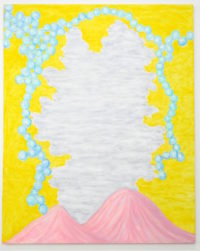
23 March – 27 April, 2019
Opening reception: 18.00-20.00 on 23 Mar.
Closed on Sun., Mon., and public holidays
Among the works of Tokuoka Shinsen (1896-1972) is Camellia (1922) (collection of the National Museum of Modern Art, Tokyo). At 102.1 by 86.8 cm, it is not a very large work, but there is a somehow eerie and unreal aspect to the depiction of a camellia tree filling the pictorial space and spilling over the edges, its blooming flowers and lush foliage seemingly floating in a void.
A similar quality can be seen in one of Hasegawa Shigeru’s new works scheduled
to be shown in this exhibition, depicting something like a teapot surrounded by
cucumbers. The teapot is both like and not like a teapot (the same can be said of
the cucumbers), and painted above them in a pure shade of yellow appear to be
some sort of citrus fruits (although they may not be). The gray area at the edge
of the picture resembles both draped fabric and a line of hills.
As suggested by Hasegawa’s titling his exhibition PAINTING, the painting described
above is nothing besides just that, and to demand that it be something more than
that may be making grossly unjustified assumptions.
Nonetheless, there is a feeling of both exhilaration and discomfort like biting on
sand in one’s food, a hazy, cryptic quality that makes the viewer seek some small
clue as to what he or she is seeing and why the artist chose to paint it. The untitled
works withhold the information we seek, and we go back to the painting and
examine it again for clues, with a feeling like going around in circles. It is as if our
attitude toward viewing Hasegawa’s painting is being tested, and we cannot help
but tense up in response. What we seek to obtain from Hasegawa’s painting is
something that can only come from within oneself, and viewing it brings us face to
face with our own depth of knowledge and receptivity.
What does Hasegawa Shigeru paint?
Why does Hasegawa Shigeru paint?
How does Hasegawa, who was long based in Europe, interpret PAINTING? He has
evidently given profound and prolonged thought to what constitutes his own
PAINTING, the result of which is a body of work conveying obsession, bordering on
the mad, with asserting its own unique identity.
This solo exhibition features six new and recent works by Hasegawa as well as older
work, and is his first in nine years after a lengthy period of silence. We sincerely hope
you will visit the gallery while the exhibition is on view.
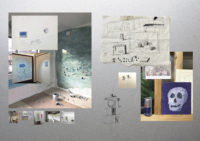
Period:”4 days for a flash” : 15 – 18 Nov. 2018
“5 days for a flash (year-end)” : 18 – 22 Dec. 2018
We are pleased to announce the solo show of Shinichiro Kano in the two separate terms in November and in December.
The first term will be held between 15th – 18th November, and the second will be during 18th – 22nd December. Between these 2 terms, Kano will have a solo
show of “Jump Over the Flagpole” at switch point during 29th November – 15th December.
Kano paints the dice, playing cards, figures, and other daily objects around him
since his childhood over and over again with changing its scale, colour or the
texture of them. He has attempted many ways of installations to search other
combinations and perspectives of the artworks, however this time, he tries to use
the gallery space itself as a device to seek the new phase to see them.
The periods of the show are very short unfortunately, but it would be very much
appreciated if you could come and visit us to wander together with us in the
gallery to reach the new track.
installation views of “4 days for a flash”:
4 days for a flash
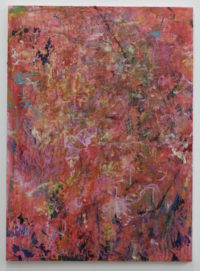
Period:28th August – 15th September, 2018
Opening hours:12.00-19.00
Closed on Sun, Mon, Public holidays
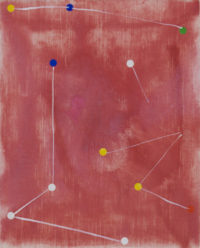
Luca COSTA “NAMIKOZO”
2 – 30 June, 2018
We are pleased to announce the solo show of the Argentine artist, Luca COSTA (b.1989) for the first time in Japan. Luca Costa is the imaginary artist made by the several Japanese artists. She/he has the eternal life, and so will keep on transforming her/his form and style of artworks according to the time and people she/he is related to. This is only the beginning of her/his artistic career, and it would be great if you could witness the moment of her/his endeavor.
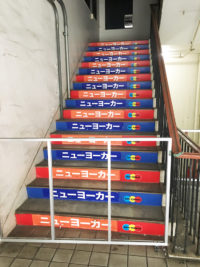
IKEZAKI Takuya’s GBP
23 – 24 Mar, 2018
We are pleased to announce the solo show of IKEZAKI Takuya only for two days on 23rd, and 24th of March, 2018. IKEZAKI will be off to New York in the end of March, and will stay there for a year. The show introduces his recent and past works created in Japan, and you are welcome to meet and talk to the artist before he departs to US during the show.
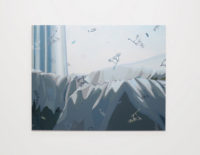
16 Dec. 2017 – 27 Jan. 2018
Closed:23 Dec. 2017 – 15 Jan. 2018
Opening hour:12:00-19:00 (Closed on Sun, Mon, National holiday)
We will show the selected works of IKEZAKI Takuya, Makiko MASUTANI, and Chihiro MORI with the selection of books and catalogues of them released recently to peep their activities.